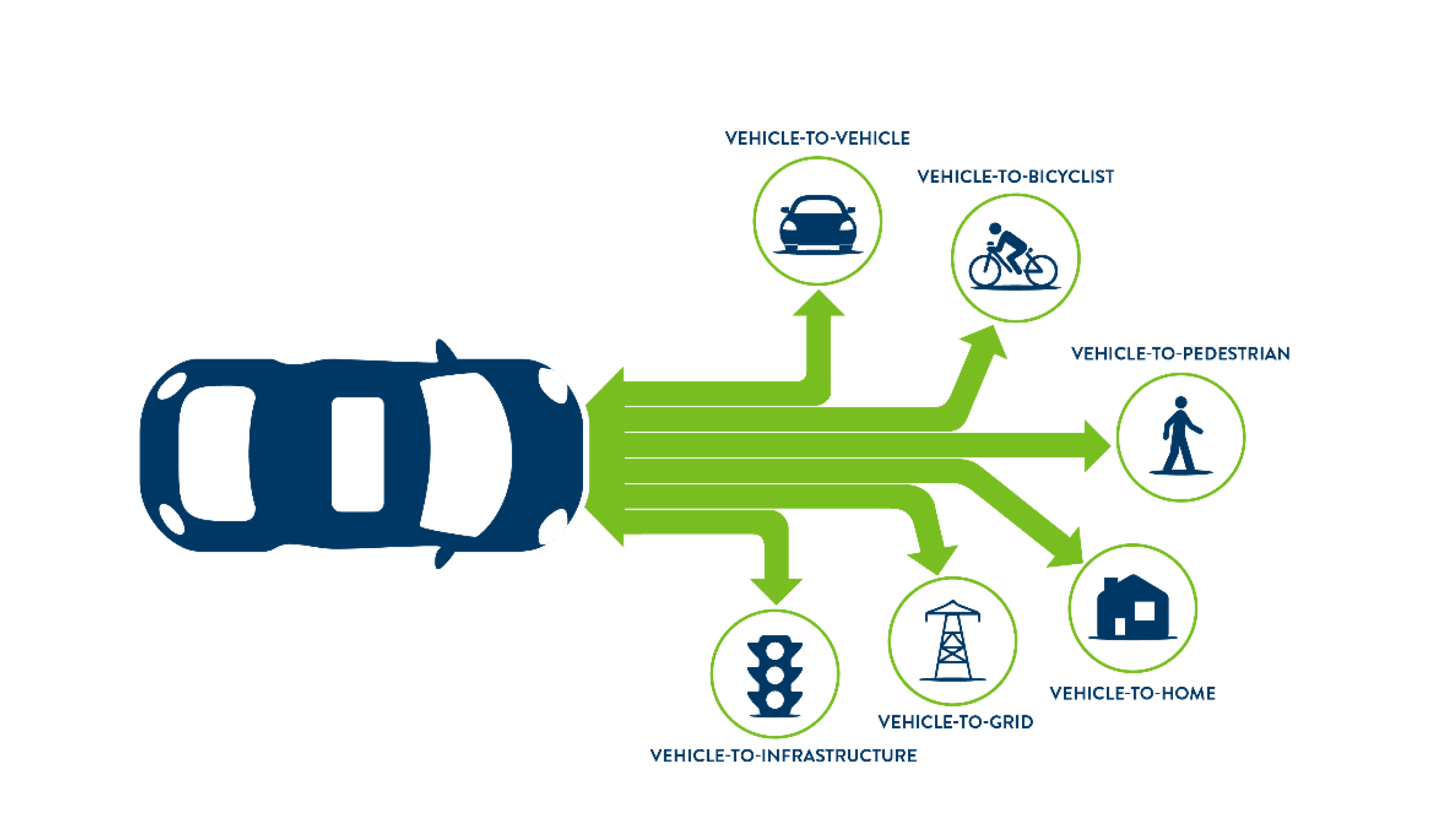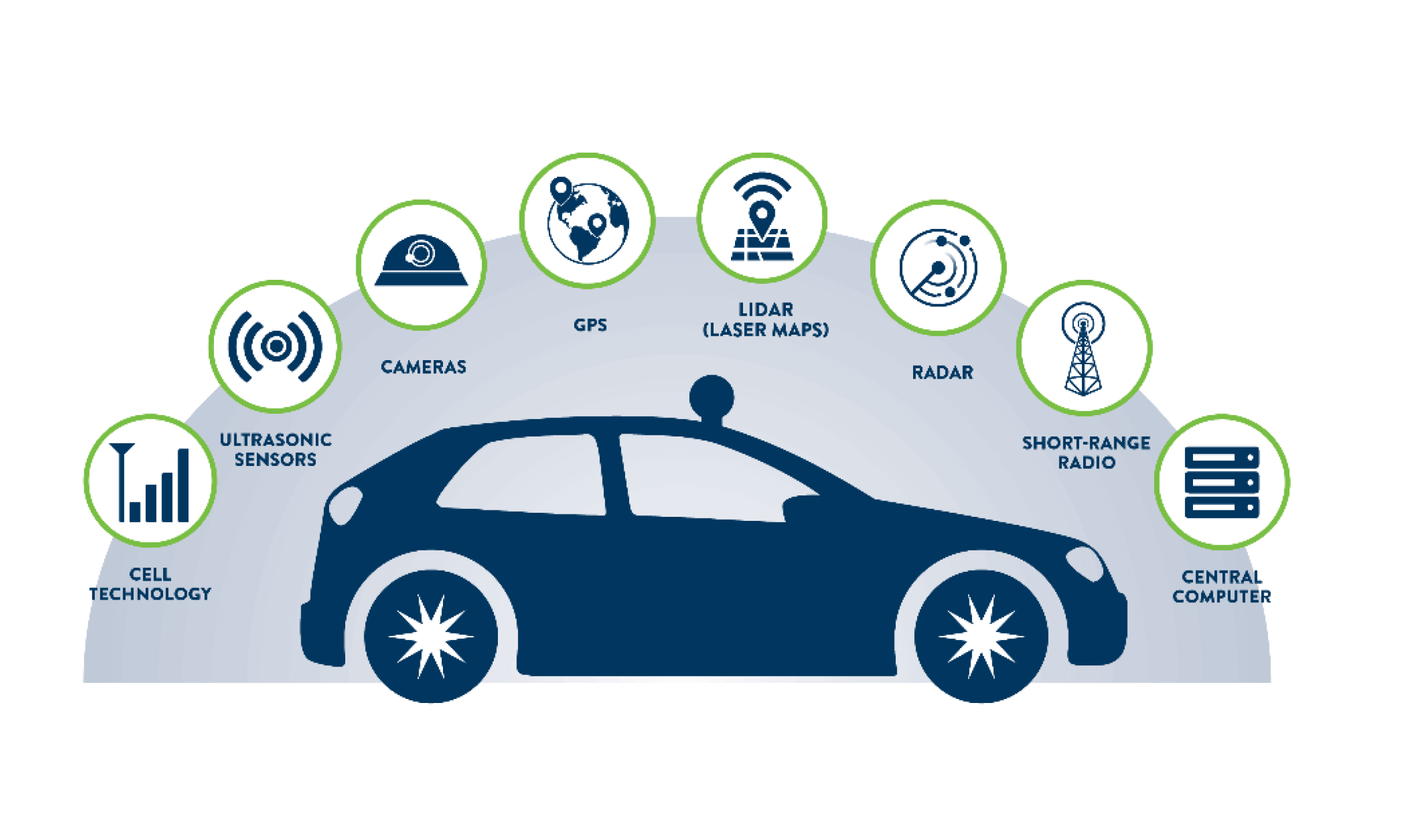About CAV
Connect with us
How CAV technology works
Connected and automated vehicle (CAV) technology has sensors and systems that analyze road conditions and scan for driving hazards. The goal is to provide safer movement of goods, people and services. There are a variety of sensors integrated in various CAV’s, including optical, ultrasonic, radar and lidar. These sensors function like "eyes" that can see in all directions and track objects over multiple fields of view, allowing the vehicles to "see" more than a human driver can.
Connected vehicles

Connected vehicles use technology to communicate with each other, connect with traffic signals, signs, and other road items, or obtain data from cloud technology.
Automated vehicles

Automated vehicles use technology to steer, accelerate and brake with little to no human input. Some vehicles still require a human to monitor the roadway, while other vehicles require no human intervention.
Levels of automation
There are different levels of automated technology:
- Level 0: The human driver does all the driving.
- Level 1: An advanced driver assistance system (ADAS) on the vehicle can sometimes assist the human driver with either steering or braking/accelerating, but not both simultaneously.
- Level 2: An advanced driver assistance system (ADAS) on the vehicle control both steering and braking/accelerating simultaneously under some circumstances. A human in the driver seat must continue to pay full attention monitoring the driving environment at all times and perform the rest of the driving tasks.
- Level 3: An automated driving system (ADS) on the vehicle perform all aspects of the driving task under some circumstances. In those circumstances, the human driver must be ready to take back control at any time when the ADS requests the human driver to do so. In all other circumstances, the human driver performs the driving task.
- Level 4: An automated driving system (ADS) on the vehicle can itself perform all driving tasks and monitor the driving environment - essentially, do all the driving - in certain circumstances. It's not required that the human pay attention in those circumstances.
- Level 5: An automated driving system (ADS) on the vehicle can do all the driving in all circumstances. The human occupants are considered passengers and don't need to be involved in driving.
Of the levels listed above, some are available today and others will come in the future. This includes everything from no automation, where a fully engaged driver is required at all times, to full autonomy, where an automated vehicle operates independently in all settings without a human driver.
Learn more about CAV technology and innovation
CAV technology is rapidly changing
While it is evolving, CAV technology has been in use on Minnesota's roads for some time. Most new vehicles sold today have some level of automation such as lane keeping assist, adaptive cruise control, traffic jam assist, self-park, highway autopilot and more. Vehicles available today are considered levels one and two. Levels three, four and five are not yet commercially available.
Automobile manufacturers are investing heavily in these technologies and departments of transportation are increasingly testing and planning for CAV on U.S. roadways. MnDOT regularly invests in Intelligent Transportation Systems (ITS), which encompasses a broad range of wireless communications-based information and electronics technology. Some ITS projects are considered connected vehicle technology or serve as the backbone for future connected vehicle applications.
CAV technology will impact all types of transportation
CAV technology will impact all types of transportation, not just personal vehicles. Auto manufacturers are investing in CAV technology, such as blind spot detection, that benefits drivers and other roadway users, such as people walking or riding bicycles. Many new and existing companies are focused on developing automated shuttles for use in large- and small-scale transit systems. Roadway authorities are already implementing connected vehicle technology, such as signal pre-emption, to improve operations and safety for drivers and transit riders.
CAV technology has the potential to improve mobility for people and goods
Safe and efficient movement of goods, people and services is the backbone of Minnesota's economy. CAV technology has the potential to improve mobility for all types of transportation. Connected and automated vehicles analyze road conditions, ease traffic flow, increase transit reliability and scan for other driving hazards, which results in the safer and more efficient movement of goods, people and services. CAV's potential to significantly reduce motor vehicle crashes could help not only save lives but save our economy billions of dollars per year.
CAV technology has the potential to better connect people to opportunities
CAV technologies will connect communities to jobs, healthcare, public safety, education, essential services and families. CAV technology has the potential to provide enhanced and new mobility options for many people in Minnesota. According to the National Highway Traffic Safety Administration (NHTSA), employment and independent living often rests on the ability to drive. Automated vehicles could extend that kind of freedom to millions more.


